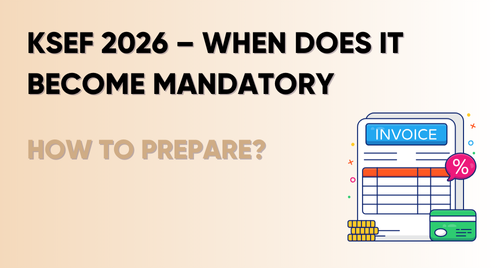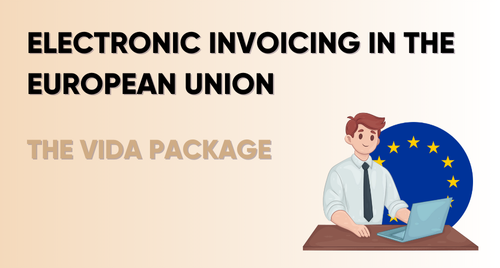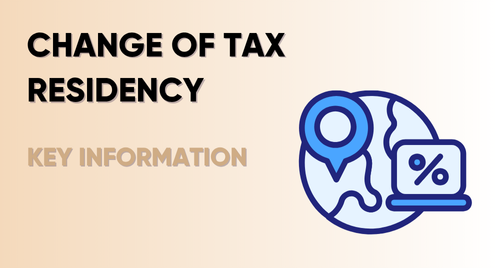.jpg)
Tax Haven Transactions
As a rule, taxpayers have transfer pricing obligations for transactions with related
parties. However, regulations also mandate arm's length pricing and documentation
of transactions with entities in so-called "tax havens".
Here we point out when and what obligations taxpayers need to keep in mind.
Direct transactions with tax havens
According to Article 11o paragraph 1 of the CIT Act / Article 23za paragraph 1 of the
PIT Act:
Taxpayers and companies that are not legal entities making a transaction
other than a controlled transaction with an entity with a place of residence,
headquarters or board of directors in a territory or country practicing
harmful tax competition are also obliged to prepare local transfer pricing
documentation, if the value of this transaction for the tax year, and in the
case of companies that are not legal entities - for the fiscal year, exceeds
PLN 100,000.
In other words, if a taxpayer transacts with a tax haven for an amount exceeding
PLN 100,000 in a tax year, it will have to prepare TP documentation for that year - a
general part and a comparative analysis. This documentation should prove that the
transaction prices agreed with the entity were in accordance with the arm's length
principle.
In addition to preparing TP documentation, it is also necessary to remember to show
the transactions and file the TPR-C / TPR-P form. In addition, the taxpayer submits a
statement to the tax office that the obligation to prepare the documentation has been
fulfilled and that the prices agreed with the tax haven were market-based.
Indirect transactions with tax havens
Beginning in 2021, transfer pricing obligations also apply to taxpayers who cooperate
with tax havens indirectly. According to Article 11o paragraph 1a of the CIT Act /
23za paragraph 1a of the PIT Act:
Taxpayers and non-corporate companies making a controlled transaction
or a transaction other than a controlled transaction are obliged to prepare
local transfer pricing documentation, if the actual owner has a residence,
headquarters or board of directors in a territory or country applying
harmful tax competition and the value of this transaction for the tax year, and in the case of non-corporate companies - for the fiscal year, exceeds
PLN 500,000.
In practice, therefore, the regulations require taxpayers to verify each contractor -
both related and unrelated - with whom the value of transactions for the year
exceeded PLN 0.5 million in terms of determining the actual owner of the
receivables.
If our contractor has entered into such transactions with the tax haven(s) in 2021,
then the real owner of the receivables paid to this contractor must be considered to
be the tax haven entity. This causes us as a taxpayer to prepare transfer pricing
documentation.
The regulations also indicate that a taxpayer is obliged to presume that the real
owner is domiciled, headquartered or managed in a tax haven if its contractor settles
accounts with a tax haven entity during the tax year. In determining these
circumstances, the taxpayer is obliged to exercise due diligence.
Taxpayers must therefore check all their contractors, with whom the amount of
transactions exceeded PLN 0.5 million in the tax year, whether they are cooperating
with tax havens. If they fail to do so, this automatically implies an obligation to
prepare documentation.
Does this apply only to suppliers or also to customers?
Until the end of 2021, it was not clear whether a taxpayer should verify only its
suppliers or also its customers. The regulations did not clearly indicate this, and the
Minister of Finance, in a draft clarification, pointed to a broad interpretation of the
regulations. On December 9, 2021, General Interpretation No. DCT2.8203.2.2021
was issued on the concept of a controlled transaction of a homogeneous nature,
where it was clarified that the obligation to verify applies only to purchase
transactions, as only such transactions result in a receivable for which the actual
owner can be determined. Therefore, the verification obligation for indirect
transactions with tax havens does not apply to recipients, but only to suppliers.
How do you determine exceeding the 0.5 million threshold?
The threshold of PLN 0.5 million applies to homogeneous transactions carried out in
a fiscal year with a given single contractor (supplier). The value of transactions is
determined on the basis of invoices received in a given year. It is worth pointing out
that the Minister of Finance indicates in the explanatory notes that the condition of
making settlements with tax havens is considered to be met if our supplier makes
settlements with the tax haven entity/entities with a total value of at least PLN 0.5 million. Transactions with our supplier's tax havens below PLN 0.5, are not covered
by the regime of these regulations.
How to apply these regulations in practice?
Checking our contractors for whether or not they are cooperating with tax havens in
practice can be difficult. It is worth preparing for this in advance - I remind you that
the deadline for preparing TP documentation and submitting the TPR and statement
is September 30, 2022 (for taxpayers whose tax year coincides with the calendar
year).
In view of this, it is recommended to analyze all suppliers with whom the amount of
transactions exceeded PLN 0.5 million in 2021, collect statements from them as to
the actual owner and implement a procedure to verify these suppliers/statements
with due diligence.
List of tax havens
Finally, it is worth pointing out where exactly we can find the list of tax havens. The
Regulation of the Minister of Finance of March 28, 2019 on the determination of
countries and territories practicing harmful tax competition in the field of corporate
income tax contains a closed catalog of 26 "paradise" entities. It includes such
territories as the Principality of Andorra, Hong Kong, the Principality of Monaco, the
Republic of Panama, the British Virgin Islands, and Grenada.










